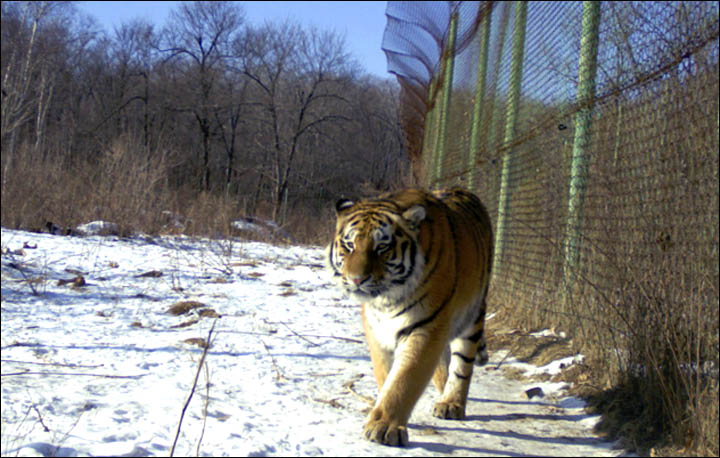27 May 2015
Plans to remove barbed wire from migration route would allow safe passage and help boost numbers of tigers and leopards.

'In nature there are no borders and predators do not have passports, so it is not in our power to tell tigers when to go to China or come back.' Picture: Phoenix foundation
With more of the animals trying to cross between China and Russia conservationists are keen to create conditions that will help safeguard the populations. One such move could see barbed wire removed from areas used for migration routes, to allow easy passage and prevent injuries.
According to estimates from Beijing Pedagogical University and the Forestry Department of Jilin Province, 42 Amur leopards and 28 tigers live at the border. Infrared cameras captured them almost 700 times during 2014 alone.
Jiang Guangshun, deputy director of the Feline Research Centre of the State Forestry Administration of China, said the creation of a joint initiative would help increase the numbers of big cats in the region.
Among the animals passing through the border area are the three tigers released by President Vladimir Putin a year ago. Satellite signals beamed to Moscow from collar trackers has been showing their movements and where they have preferred to spend their time and forage for food.
More commonly known as the Siberian tiger, the Amur tiger is listed as an endangered species, with less than 450 of them left in the region. Five years ago Russia launched a national strategy to protect the animal, which is the largest of the five tiger species.
Putin, an avid campaigner to save the species, was also recently behind the unveiling of a computer animated tiger cub as a new character on Russia’s longest-running children’s TV show.
Sergei Aramilev, director of the Primorsky branch of the Siberian Tiger Centre, said: 'Cooperation between Russia and China in the preservation of the Amur tiger population is essential to restore their numbers. In nature there are no borders and predators do not have passports, so it is not in our power to tell tigers when to go to China or come back.
'The recovery of the tiger numbers in China will create a backup of the population, which may in the future be used to increase the genetic diversity that is important for populations with low numbers.'
source
No comments:
Post a Comment